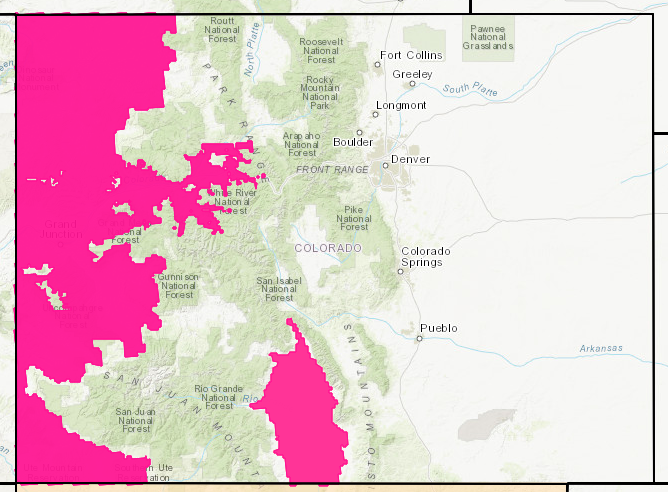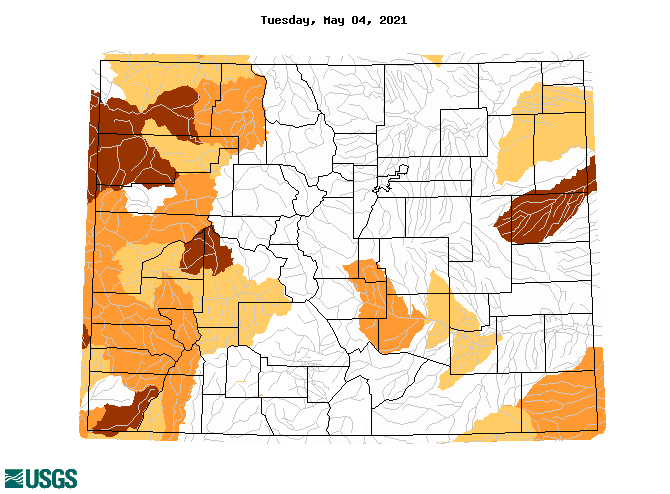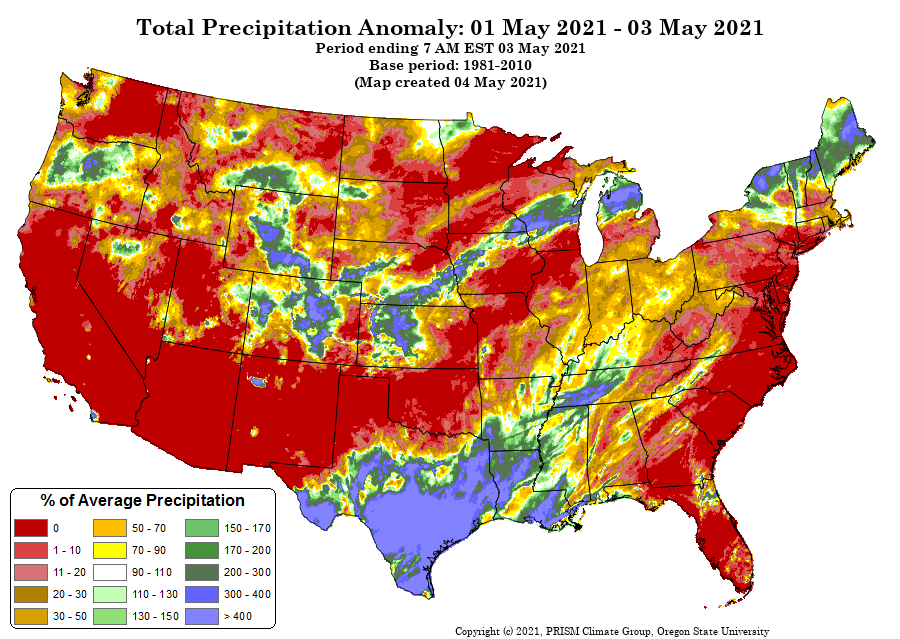Issue Date: Friday, May 7, 2021
Issue Time: 9:45 am MDT
Summary
Yesterday was another uneventful day precipitation-wise across the state of Colorado thanks to high-pressure settling in the western half of the state. This allowed for a beautiful day across the state, although with some unseasonably high temperatures, especially on the Western Slope. High temperatures and low available moisture can elevate fire danger, and Red Flag Warnings have already been issued for critically dry regions of the Western Slope and San Luis Valley. Warnings remain in effect until 9:00 pm on Friday, May 7 for the pink areas in the following map.
Flooding was not reported on Friday. For rainfall estimates in your area, check out our State Precipitation Map below.
Click Here For Map Overview
The map below shows radar-estimated, rainfall gage-adjusted Quantitative Precipitation Estimates (QPE) across Colorado. The map is updated daily during the operational season (May 1 – Sep 30) by 11AM. The following six layers are currently available: 24-hour, 48-hour and 72-hour total precipitation, as well as maximum 1-hour, 2-hour and 6-hour precipitation over the past 24 hour period (to estimate where flash flooding may have occurred). The accumulation ending time is 7AM of the date shown in the bottom right corner. Also shown optionally are vulnerable fire burn areas (post 2012), which are updated throughout the season to include new, vulnerable burn areas. The home button in the top left corner resets the map to the original zoom.









